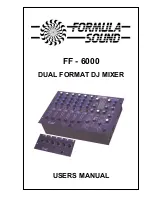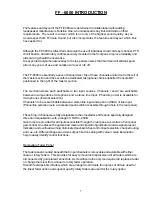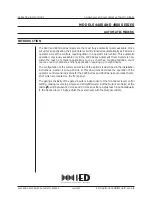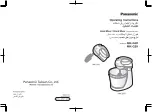
OFF
Assignment
Contour
To Both A & B
Direct to Masters
A
B
CUE
CUE
CUE
Punch
Punch
Latch
ON
Latch
ON
ZONE
MASTER
LEVEL
LEVEL
CONSOLE
MIC
MIC ON
INSERT
IN / OUT
HF
LF
CUE
O / P
O / P
Meter
L
R
Bal / Pan
MONO
MONO
MONO
Bal / Pan
L
R
Dry
Wet
Fx Mix
X-FADE
dB
0
-1
-10
-15
-20
-3
-5
-7
+1
+3
+5
+8
dB
0
-1
-10
-15
-20
-3
-5
-7
+1
+3
+5
+8
VOL
CUE BAL
CUE
MIX
SPLIT
PHONES
BOOTH
MONITORS
Fx Loop 1
Fx Loop 2
Fx Loop 1
Fx Loop 2
LOOP
SWAP
Trim
FX 1
FX 2
32 Ohm
Trim
Dry
Wet
Fx Mix
Master section
The master section contains all the
electronics required for the various summing
amplifiers, output stages, VU meters,
crossfade control circuits, etc.
Monitoring
The monitoring section of the FF-6000 is
very comprehensive. Visual monitoring is
provided by 2 stereo 24 segment l.e.d.
bargraph meters, 1 for cue signals and one
for output signals.
A powerful stereo headphone amplifier is
incorporated designed to drive headphones
of 32 ohms or greater. Connections are via
a 6.5mm or a 3.5mm 3 pole jack socket.
Simultaneous use of both sockets is not
possible.
The cue meter and the phones output are
both connected to the same signal so what
you see is what you hear.
CUE BAL (Cue Balance)
It is important that the function of this control
is fully understood.
The output from this control is fed to the
monitoring section (the cue bargraph meter)
and via the PHONES volume control to the
main phones output.
With the control turned fully counter
clockwise towards cue, the meter will read
the cue signal of any channel or effects loop
that has its cue button depressed, or the
sum of channels if more than one is
selected. If no cue buttons are depressed
the meter reads the main output level which
is dependent on the MASTER control
setting.
Turning the monitor balance control clockwise towards MIX feeds the programme signal (pre master) to the
monitoring section. Therefore the operator can quickly pan or mix between the PFL and mixer output. It also
facilitates the monitoring of a recording being made with the master turned down.
A SPLIT button is also provided (which is the preference of some operators). This provides a mono CUE
signal on one side of the monitor system and a mono program signal on the other side. The Mon Bal sets the
balance of the two signals in this situation. Practice and use will determine the best mode of operation.
Do not use headphones with an impedance lower than 32 ohms.
MASTER - This control sets the output level of the main balanced stereo and mono outputs, available via 3 pin
XLR connectors on the back panel. This output is monitored by the main phones and VU meter when the CUE
BAL control is set to CUE and no CUE is selected. The VU meter is factory calibrated 0dB = 0dBu (775mV)
ZONE -The zone output is almost identical to the main output in all respects except that the signal is not
available to the headphones monitoring section. The zone output level may be checked by depressing the
O/P Meter button located beneath the ZONE LEVEL control. This switch allows the o/p meter to read either
main output or zone output.
RECORD OUTPUTS - A pair of gold plated phono sockets are provided for the connection of stereo
recording equipment. The record outputs are not affected by the master level controls.
5




























